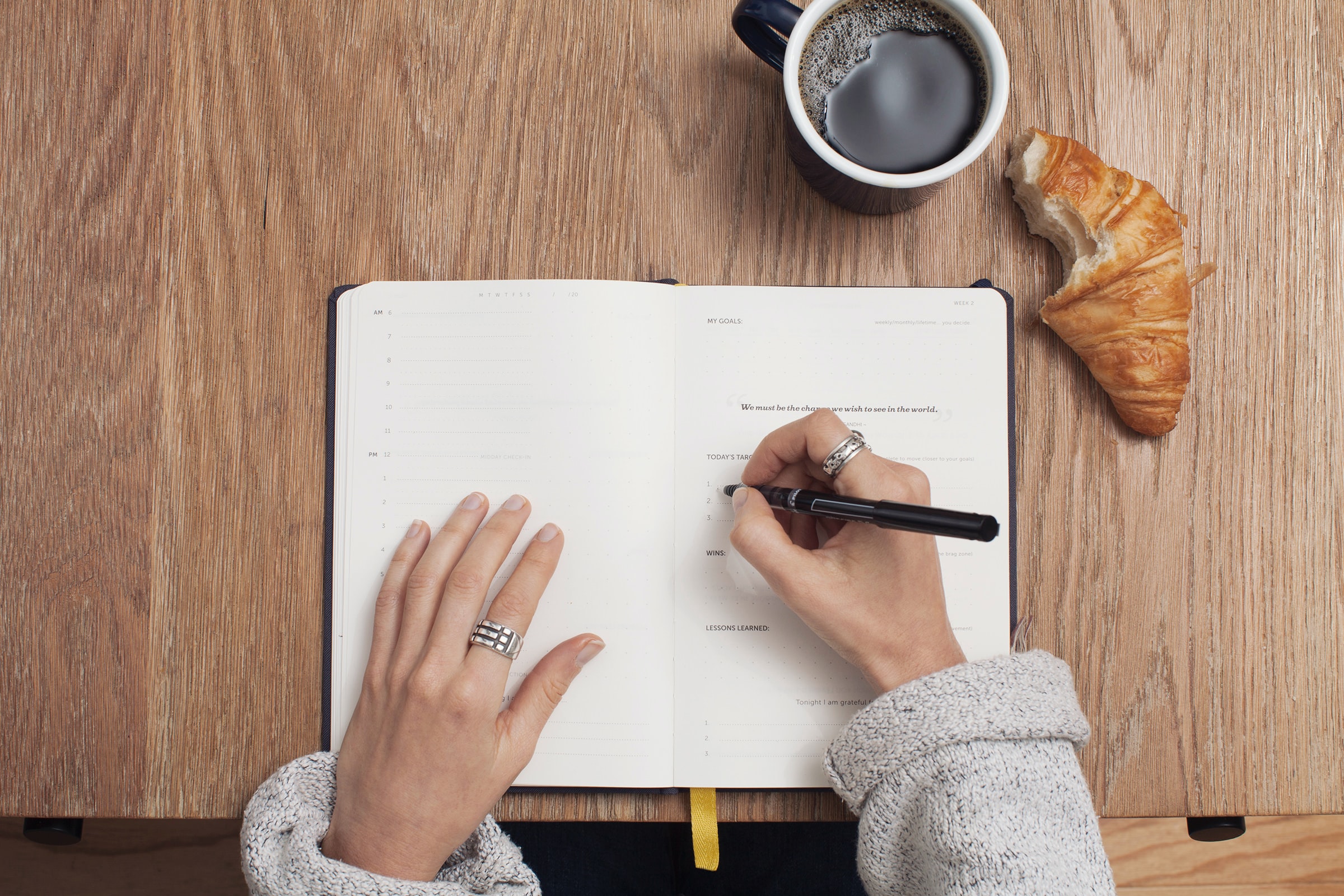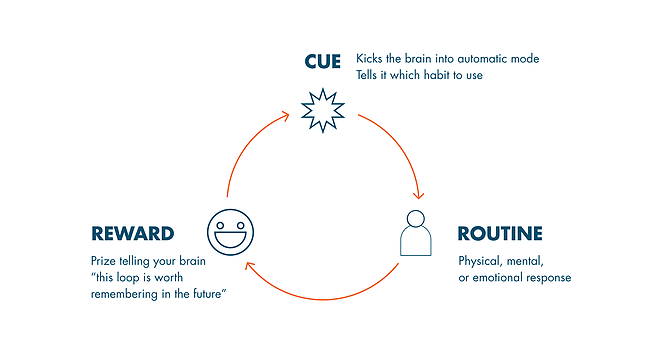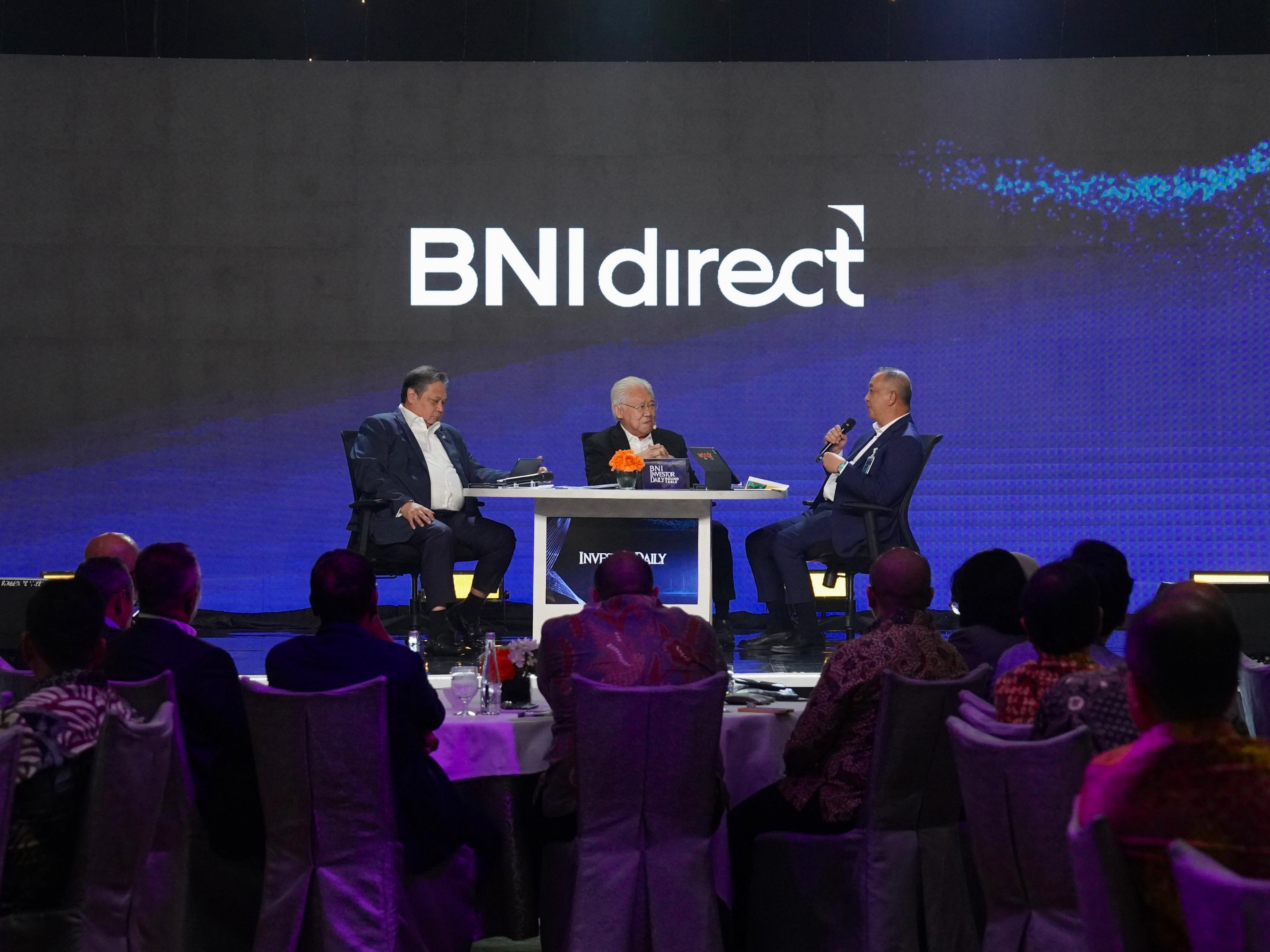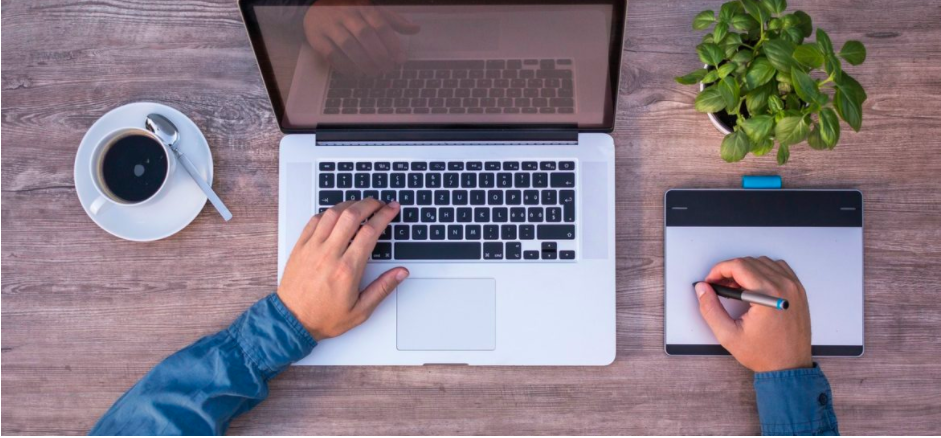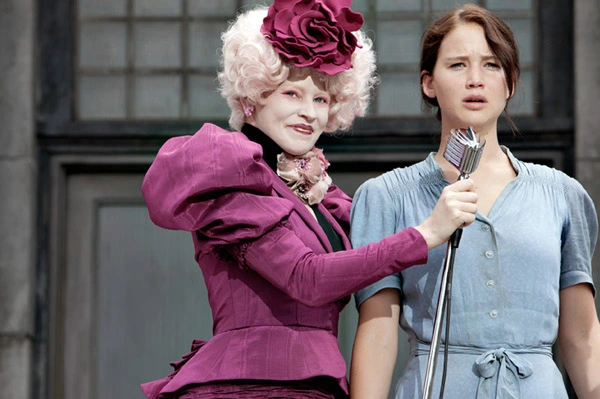Photo by Cathryn Lavery on Unsplash
According to the Cambridge dictionary, a habit is something that you do often and regularly, sometimes without knowing that you are doing it. For me, personally, habits play quite a role in my life as I always create a habit for everything I do. Just like the dictionary said, sometimes unknowingly.
Charles Duhigg in his book, The Power of Habit, analyzes how a habit is the core of everything that we do every day. He believes that a habit actually could be changed along with changing your everyday routine. Without further ado, below is the five lessons that I’ve got from the book:
- The Habit Loop
Photo by: Laxmena.medium.com
Duhigg notes that every habit works in a loop that reinforces it. The loop consists of the Cue, the Routine, and the Reward. The cue is what triggers you to do the habit and is based on a reward you are seeking. The routine is the behavior you automatically engage in to receive the reward. Lastly, the reward is what satisfies you after following the routine. For example, every morning waking up is my cue, then I would automatically walk towards the bathroom to take a shower. After that, I’d get my reward, which is feeling refreshed and ready to start the day. Thus, in order how to understand how a habit works, it is essential for you to know about the Habit Loop first!
- Habit ‘Cue’ Categories
In the book, he mentioned there are five categories in ‘Cue’; Location, Time, Emotional State, Other People, and Preceding Action. For example, I have a habit of drinking coffee after lunch. I found out that the cue for me to drink it was because I usually get pretty stressed out during that time and sweets are effective for me to wind down a little bit. Duhigg explained that there is a reason why you follow a bad habit. This is why it’s important to understand the cravings that lead to this behavior. So, for you to change your bad habit, you need to make sure what is your “cue” that triggers your routine and make sure you start with that.
- Keystone Habit
Duhigg in his book explained that a keystone habit is a habit that leads to a positive chain effect in a person. Effective change can begin by creating just one good habit. Some habits create a domino effect. Figure out the keystone habit that could drive you or maintain a good habit. For example, he uses a case of a person who started a new exercise habit. When she sharted exercising, she started eating better and becoming more productive at work. She also smoked less and felt less stressed. In this case, exercise is the keystone habit. One thing that I have always implemented in my life is that the habit of making my bed every morning! When my room is clean, I found that I work better in my room.
- Changing a Habit = Changing a Routine
Duhigg emphasizes that if you want to change your habit, start changing the routine in The Habit Loop. The more you understand the routine, the easier it is to change. At times, you can’t control the cue, yet you also can’t change the reward, but you can change the routine into a good one instead. If you are on a diet, for example, and you don’t want to skip dinner, just eat healthy food or fruit instead of your usual dinner. You are keeping the habit loop the same, but just changing the routine.
- Implementing habits for companies
In the book, Duhigg used a study case from Febreze, which used to be considered Procter and Gamble’s greatest failure. Febreze used to be marketed as “eliminating odor”. However, they realized that the customers’ senses were dulled and immuned to the bad smell. After some research, they found out that when cleaning a house, people enjoyed the rewards associated with cleaning. They liked to admire their clean space. Eventually, the Febreze team reworked the brand and pitched the “clean smell”, adding a new routine to the customers’ cleaning routine.
The company then created an ad of women spraying Febreze at the end of their cleaning routine for the refreshing smell that completed the job. After that, a lot of people were spraying Febreze to give that “clean” feeling after cleaning their house. So, if your company is struggling to understand why your product doesn’t attract many customers, try to acknowledge their habits and you may apply the Habit Loop I’ve mentioned above. Start with changing their routine!
I would recommend this book if you want to create new or change old habits but are struggling. If you understand how habits take shape in your brain, you can more effectively start to build good ones and break the bad ones. This book will definitely help you with that through various case studies and stories. Now, do you have any habits that you want to change? Share with us the cue, routine, and reward of your habit down below in the comment section!

